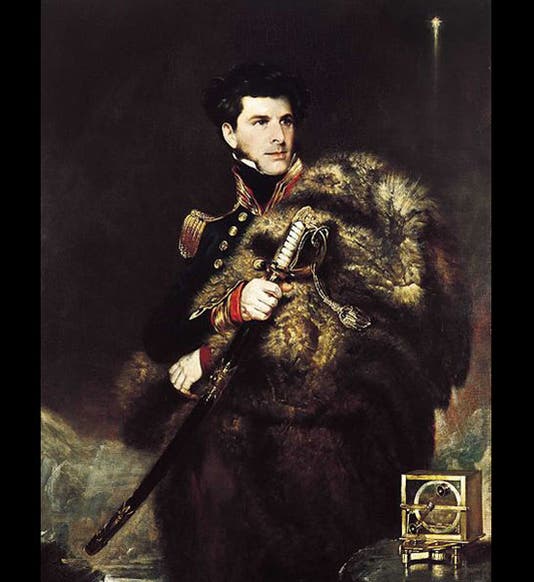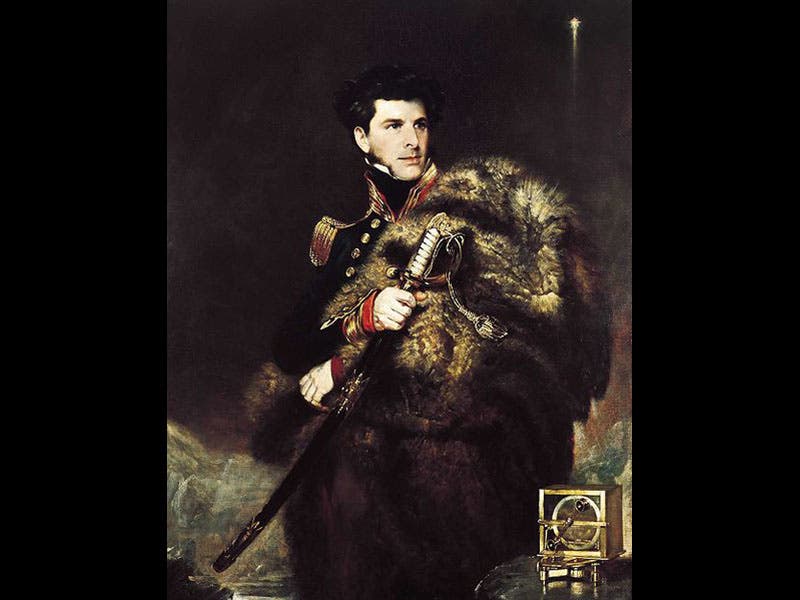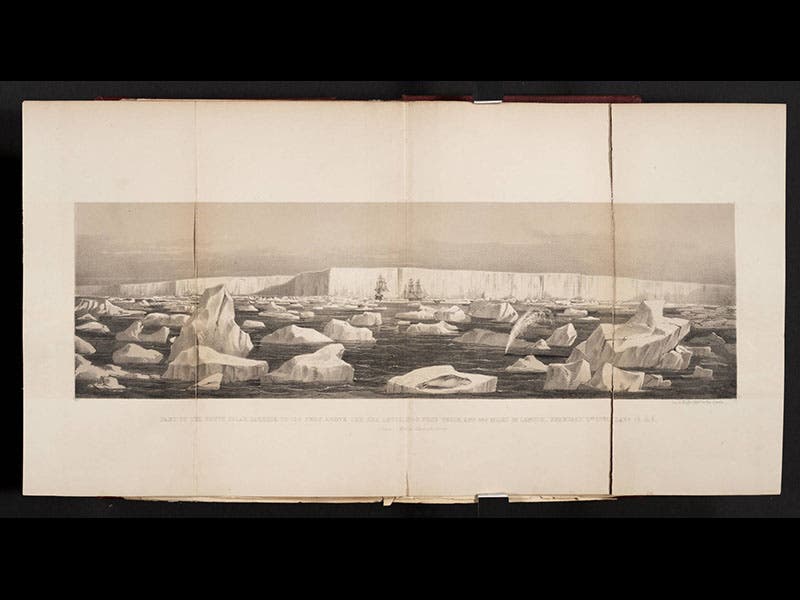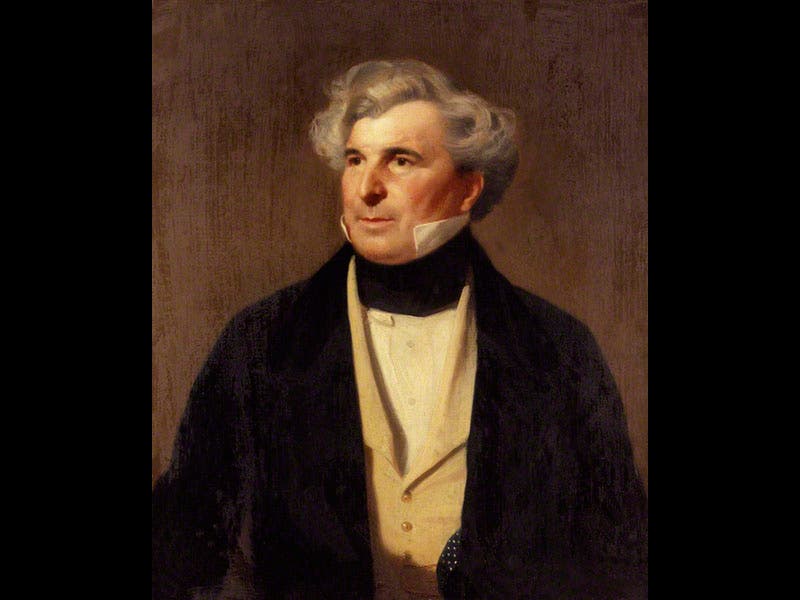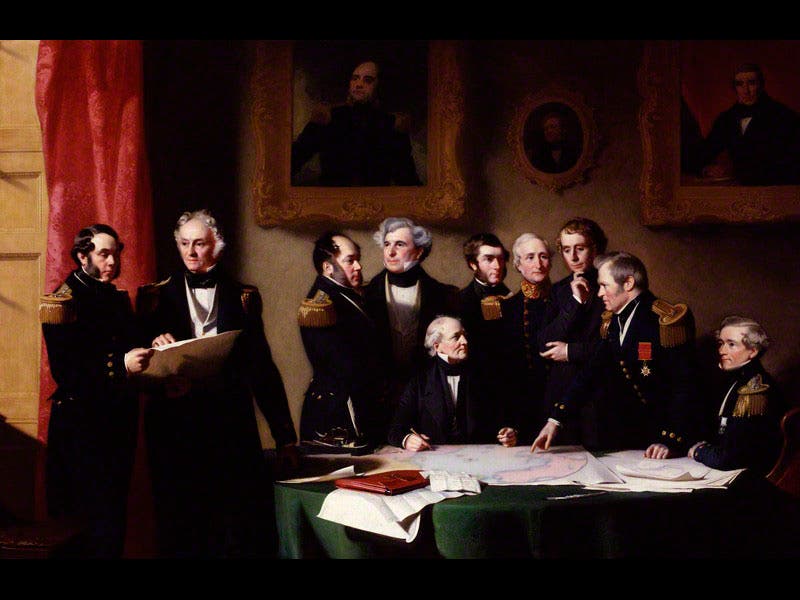Scientist of the Day - James Clark Ross
James Clark Ross, a British polar explorer, was born Apr. 15, 1800. Between 1818 and 1833, Ross served on six voyages in search of a Northwest Passage, the most of any naval officer during the entire century. On June 1, 1831, Ross became the first person to stand at the north magnetic pole, which was then on the Boothia Peninsula in the Arctic archipelago. This brought him immediate scientific fame, and a portrait that depicts not only Ross, but a dip circle, the instrument that was used to establish the location of magnetic north (first image above).
From 1839 to 1843, Ross commanded a southern voyage in the ships Erebus and Terror in an attempt to locate the south magnetic pole. The pole eluded them, but Ross and his men did discover the vast Ross Ice Sheet, the largest floating mass of ice in the world (second image). They also discovered, to everyone’s great surprise, two Antarctic volcanoes, which Ross named after his ships. In the title-page vignette to a volume on the Botany of the Voyage, Mount Erebus, the active volcano, can be seen in mild eruption (third image). Later, in 1848, Ross made his seventh Arctic voyage, in search of his old ships, Erebus and Terror, which had been taken into the northern ice by Sir John Franklin, in yet another search for the Northwest Passage. The search for Franklin was unsuccessful.
The artist Stephen Pearce made a group portrait of all the parties involved in the Franklin search, which he compiled from a collection of portraits he painted of each individual. We see above Pearce’s portrait of an older Ross (fourth image), now in the National Portrait Gallery (NPG) in London; in the group portrait, usually called The Arctic Council, and also in the NPG, it is not too difficult to locate Ross, right there in the center (fifth image).
We displayed several works relating to Ross voyages in our 2008 exhibition, Ice: A Victorian Romance, which you can find here, here, and here.
Dr. William B. Ashworth, Jr., Consultant for the History of Science, Linda Hall Library and Associate Professor, Department of History, University of Missouri-Kansas City. Comments or corrections are welcome; please direct to ashworthw@umkc.edu.

